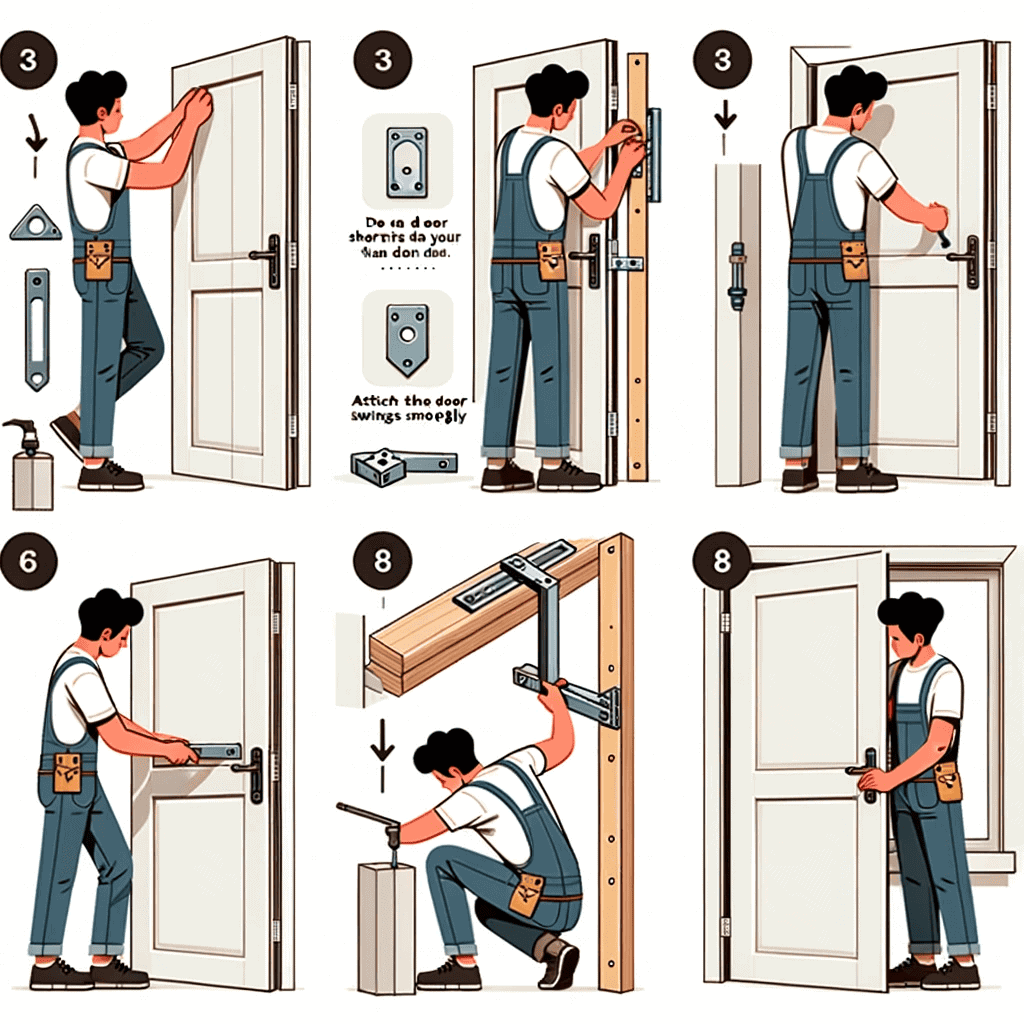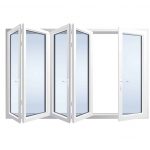
Doors are an essential part of any home. They provide privacy and security and help control airflow and noise. While most modern interior doors are 80 inches tall, also known as 6/8 doors, older homes often have shorter doors that don’t conform to today’s standards.
This comprehensive guide will cover everything you need to know about doors shorter than 80 inches. We’ll discuss standard door sizes, how to measure for a new door, options for custom sizing, installation and replacement considerations, and frequently asked questions. Whether you’re looking to replace an existing short door or want to install one in a new space with height restrictions, this guide has the information you need.
What Are The Standard Interior Door Sizes?
There are several standard interior door widths and heights used in residential construction. Here are some of the most common:
- 80 inches (6/8) – This is today’s standard interior door height. It equals 6 feet, 8 inches tall. Also referred to as a 6/8 door.
- 78 inches (6/6) – Slightly shorter doors commonly used for closets and utility rooms. Also called a 6/6 door.
- 32 inches – The standard width for most interior passage doors. Wider doors up to 36 inches are also common.
- 24, 28, 30 inches – Narrower door widths are used where space is limited.
- 60-72 inches – Shorter doors are occasionally used in areas with height restrictions.
So, while 80 inches is the modern standard, doors as short as 60 inches and as narrow as 24 inches can sometimes be found in older homes or tight spaces.
Why Is 80 Inches The Standard Height?
There are several reasons why 80 inches became the standard height for interior doors:
- Building Codes – Most building codes require a minimum height of 80 inches for any interior passage door. This ensures comfortable passage and accessibility.
- Framing Standards – Walls framed with standard 2×4 lumber result in a rough opening height of 82-83 inches after drywall. An 80-inch door fits this nicely.
- Fitting Convenience – Since most homes have 80-inch interior doors, it’s easy for manufacturers to mass produce them and for homeowners to find replacements.
- Aesthetics – An 80-inch door fits well with standard 8-foot ceiling heights and gives good proportions. Shorter doors can look undersized.
While non-standard sizes are still used where needed, most new construction homes use the 80-inch height for convenience and code compliance.
How To Measure for A Shorter Custom Interior Door

Careful measurement is crucial if you need a made-to-order interior door shorter than 80 inches. Follow these steps:
- Measure the height of the rough opening – Measure from the subfloor to the header at 3 points and use the shortest measurement. This gives the maximum door height.
- Measure the width at the top, middle, and bottom – Use the widest measurement to give maximum width.
- Determine thickness – Measure framing and existing door to determine the required thickness. 1-3/8 inches is standard.
- Allow for clearance – Subtract 1/2 inch from height and 1/4 inch from width to allow fitting and clearance.
- Check local codes – Some areas have minimum size requirements, even for non-standard applications.
- Select size – Choose the largest standard size under your measurements. Or order a fully custom size if needed.
Following this process carefully will ensure your made-to-order door arrives at the correct size to fit your opening properly.
Options For Shorter Interior Doors
What are your options for a door shorter than the 80-inch standard? Here are a few:
- Order a custom size – Most door manufacturers can make custom-height doors down to 60 inches. Lead times and prices are higher.
- Cut down a standard door – An 80-inch slab door can be trimmed to shorter lengths. Follow manufacturer guidelines on maximum amounts.
- Use a specialty door – Accordion, cafe, saloon, and other specialty doors come in shorter sizes.
- Install a pocket door – Eliminates swing clearance needs, allowing taller doors in tight spots.
- Change the opening – Modify framing to create a shorter rough opening height.
The best option depends on your specific needs, style preferences, and budget. Custom sizing provides the most flexibility but is not always essential.
How Much Can You Cut Off A Standard Interior Door?
If you want to shorten a standard 80-inch slab door, how much can you safely cut off the height while retaining structural integrity? Here are a few general guidelines:
- Engineered wood doors – Can typically be trimmed 1-1.5 inches from the height. Cut evenly off the top and bottom edges.
- Solid wood doors – Can handle more trimming, around 2 inches total. Limit 1 inch from any single edge.
- Hollow core doors – Recommend 1 inch max from the height. The core is fragile, so limit cuts.
- fire-rated doors – They should never be cut as they void the fire rating and certification.
- Pre-hung doors – Cut door slabs and jambs equally to keep margins consistent.
Always refer to the manufacturer’s official trim guidelines before cutting. And take care to calculate your sizes correctly before cutting to avoid ending up too short!
Adjusting Door Frames For Shorter Doors

If your rough opening height is made for a standard 80-inch door, you may need to adjust the framing for a shorter custom-sized door:
- Pocket framing – Frame the opening using 2x lumber “pocketed” into the stud bay at the desired height.
- Add filler strips – Apply 1x lumber as filler to reduce the opening vertically.
- Cut cripple studs – Cut framing boards above the opening to the needed header height.
- Install a shorter header – Replace the header board with a shorter piece of dimensional lumber.
With care, an existing door opening can be adapted to accept a shorter custom door. The work is fairly straightforward for an experienced DIYer or carpenter.
Considerations When Installing Shorter Interior Doors
If you’ll be installing a door that’s shorter than what’s typical, keep these tips in mind:
- Check rough opening size – Make sure the height is large enough to accommodate the door once jambs are added.
- Include perimeter trim – Baseboard and casing height must align with the door size.
- Adjust strike plate – Reposition the strike plate vertically to match the door knob height.
- Watch ceiling clearance – Make sure there’s enough room for the door to swing open fully.
- Maintain reveals – Cut door casing and jamb to maintain consistent margin gaps if cutting down a door.
- Confirm with codes – Verify that local codes allow a door under the standard 80-inch height.
With careful planning and installation, a shorter door can look and operate just as nicely as a standard-sized one.
Costs To Install A Shorter Interior Door
What can you expect to pay for a shorter custom interior door installed? Here are some typical service costs:
- Door cost – $75 to $300 depending on materials and custom sizing
- Installation – Approximately $125 for a basic slab door install
- Framing modifications – Around $200 if the rough opening must be altered
- Finishing – $50 to $150 for priming/painting to match existing trim
- Disposal fees – $25 to $50 to haul away the old door and hardware
With modifications for a non-standard height, expect to pay $500 or more total, depending on project complexity. Always get multiple quotes.
FAQ About Short Interior Doors
Here are answers to some frequently asked questions about doors shorter than the standard 80-inch height:
What’s the shortest standard interior door height?
- The shortest standard size is 78 inches (6/6). Anything shorter would be a custom order.
What height should interior doors be?
- For standard rooms with 8-foot ceilings, 80 inches is typical. Smaller doors may be used for closets, bathrooms, laundry rooms and attics.
Can you cut 4 inches off an interior door?
- It depends on the door material, but 3-4 inches can usually be removed from solid wood or composite doors without issue. Always double-check manufacturer guidelines.
Do all interior doors have to be the same height?
- No, mixing and matching interior door heights as needed is okay based on ceiling heights and room sizes.
Can you make a 6/8 door shorter?
- Yes, a 6/8 (80-inch) door can be cut down if no more than the manufacturer’s recommended amount is removed.
Do closet doors have to be 80 inches?
- No, closet doors can be smaller, typically 78 inches or even shorter for shallow closets. The space does not require a standard passage door height.
Should pantry doors be full height?
- A full or near full-height door is preferable for pantries to ease moving items in and out. But a shorter door can work in tight spaces.
How tall are interior doors in old homes?
- Door heights in older homes can vary greatly. 60 to 78 inches were common before modern standardization. Measure carefully before replacing old doors.
Do Shorter Doors Require Different Hinge Configurations?
Yes, shorter doors may require different door hinge options discussed to ensure proper functionality and aesthetics. The size and weight of the door will impact the type of hinge needed, so it’s essential to consider this when installing shorter doors to maintain smooth operation and stability.
Can I Use French Doors If My Doorway Is Shorter Than 80 Inches?
Yes, you can use French doors for doorways shorter than 80 inches. To ensure a proper fit, consult a French doors sizing guide. This will help you find the right dimensions and make adjustments if necessary to accommodate the shorter doorway without sacrificing style.
Modern Interior Doors Are 80 Inches High
While most modern interior doors are 80 inches high, fitting shorter ones is still necessary in some homes. Whether you have low ceiling heights, are working with existing small openings, or want a certain look, doors under 80 inches can work beautifully.
Just be sure to carefully measure your space, order custom sizes as needed, and make any necessary adjustments to your framing. Follow the manufacturer’s installation instructions closely. With proper planning and execution, a shorter door will look right at home.
This guide covers everything you need to know, but please reach out if you have any other questions!

Hi, I’m George Anderson, an expert installer with an extensive door installation and maintenance background. I’m passionate about sharing my knowledge on door equipment and accessories through my writing, helping homeowners make informed decisions. My specialty lies in custom door installations, with a commitment to enhancing the aesthetics of every home. Please feel free to reach out anytime for help with door-related questions or needs.










